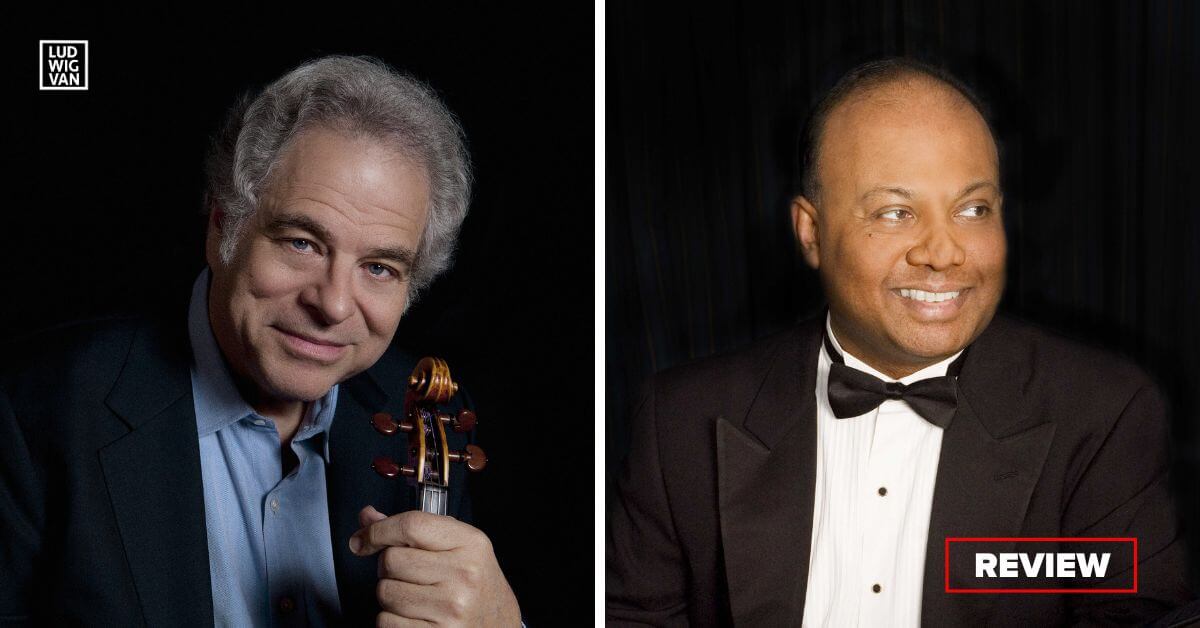[ad_1]

Leclair: Violin Sonata in D Main, Op. 9 No. 3; Beethoven: Sonata for Violin and Piano No. 9 in A Main, Op. 47 “Kreutzer”; Schumann: Fantasiestücke, Op. 73 & works introduced from the stage. Itzhak Perlman, violin, Rohan De Silva, piano. Could 16, 2024, Roy Thomson Corridor.
How do you describe a violin virtuoso and conductor whose profession has spanned over 65 years, who helped popularized classical music by way of appearances on fashionable TV exhibits and Hollywood soundtracks, performed for presidents and royalty, and has obtained quite a few awards, together with 16 Grammys, 4 Emmys and the Presidential Medal of Freedom?
Itzhak Perlman is a legend, a rockstar within the classical world. On the age of 78, he nonetheless maintains an lively schedule of performing and talking engagements, along with nurturing younger violinists in his personal Perlman Music Program.
For a few years earlier than the pandemic, Perlman usually carried out with the Toronto Symphony Orchestra, however final night time, he gave an intimate recital along with his long-time collaborator, pianist Rohan De Silva, at Roy Thomson Corridor, to an nearly full home.
The formal program consisted of three violin sonatas by Leclair, Beethoven and Schumann. Leclair’s Violin Sonata in D Main appeared to be merely a warm-up train for Perlman, as he executed the trills, arpeggios and double or triple stops in a quite nonchalant method. The cheerful, dance-like fourth motion Tambourin: Presto has the texture of a fiddler taking part in to a rowdy, Irish-dancing crowd in a bar. This was one in every of a number of sections the place Perlman might have dialed up the vibrancy with extra crescendos and urgency.
Beethoven’s Sonata for Violin and Piano No. 9 in A Main, extra generally often called the “Kreutzer,” was essentially the most tough of the three items, stuffed with speedy hearth passages on the prime of the instrument’s vary. The primary motion alternated between sluggish and quick tempos. Perlman dazzled along with his technical prowess, his fingers darting nimbly with ease. He was so comfy and in management, you can not see him even breaking a sweat. The second sluggish motion was swish and introspective. The ultimate motion opened to a galloping rhythm, the music washed over like heat currents in a peaceful sea when extra waves had been known as for.
Perlman’s taking part in left me craving for extra shifting colors and moods. His sound lacked the nice and cozy shimmer he’s identified for. The issue herein was his fashion of taking part in, which is now extra suited to a smaller, extra intimate venue with hotter acoustics (which Roy Thomson Corridor is just not.) The Beethoven was as a lot a showcase for the piano, and De Silva was technically excellent in each means, although there have been instances he overpowered the violin. It could be remiss to not give full accolades to this sensible pianist, whose intricate taking part in was full of colors and nuance on the identical time.
Schumann’s “Fantasiestücke” is a set of three interconnected items that was performed at his personal memorial service in 1856, by none apart from Johannes Brahms on the piano, together with violinist Joseph Joachim. Once more, Perlman performed with a quiet ardour and conveyed a spirit of nostalgia. Though his fortes lacked quantity, his artistry was plain when he performed pianissimo. The place he lacked hearth and vigour, he made up for along with his mature and flawless method.
The actual fireworks started with the casual program, which Perlman introduced from the stage, together with some mild banter that clearly delighted the viewers. Perlman sported a stack of papers that he joked was the record of items he has performed in Toronto since 1912. He then rummaged by way of the record and gave the looks of randomly selecting six quick items for the remainder of the night, starting with two items by Smetana and one by Tchaikovsky.
These had been performed with extra of his signature silky sound and memorable intonation. His rendition of Fritz Kreisler’s “Tambourin Chinois,” the quickest tempo he performed final night time, was his virtuosity in full show. This was adopted John William’s theme to “Schindler’s Listing,” probably Perlman’s best-known piece. Audiences might have been considerably disenchanted by this stay model, which he took at a sooner tempo and didn’t have the identical pathos and depth that warmed his well-known recording.
Perlman concluded the night with the thrilling Brahms’ “Hungarian Dance No. 1.” Even when there was slight incongruence between the violin and the piano, and a scarcity of fiery ardour, it didn’t matter to the viewers, who leapt to their toes in extended standing ovations.
This system notice fittingly describes Itzhak Perlman as “the reigning virtuoso of the violin.” Despite the fact that the world is stuffed with youthful violin virtuosos who play with extra aptitude and gusto, Perlman’s taking part in is timeless and true to his coronary heart. It was a privilege for Toronto audiences to witness this residing legend who, regardless of nearing 80 years previous, appears to be nowhere close to approaching the top of his illustrious profession.
*By Denise Lai for LvT
Are you trying to promote an occasion? Have a information tip? Must know one of the best occasions occurring this weekend? Ship us a notice.
#LUDWIGVAN
Get the every day arts information straight to your inbox.
Join the Ludwig Van Toronto e-Blast! — native classical music and opera information straight to your inbox HERE.
[ad_2]




